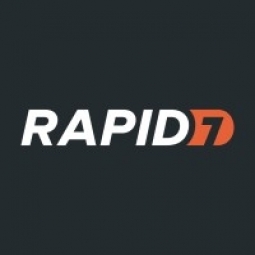技术
- 网络安全和隐私 - 应用安全
- 平台即服务 (PaaS) - 应用开发平台
适用行业
- 电子产品
- 玻璃
适用功能
- 维护
用例
- 网络安全
- 入侵检测系统
服务
- 云规划/设计/实施服务
- 网络安全服务
关于客户
Domestic & General 是一家领先的订阅式家用电器护理提供商,为各种家用产品和消费电子产品提供保护、维护和支持。该公司建立在世界上最先进的全球保修平台之一的基础上,在客户最需要的时候将客户与设备工程师联系起来。 D&G 在西班牙、德国、法国、葡萄牙、意大利、美国和澳大利亚等 11 个国际市场拥有近 3,000 名员工,负责维护近 2,300 万台电器,为大约 1,600 万客户提供支持。
挑战
Domestic & General (D&G) 是一家领先的订阅式家电护理提供商,在管理网络安全方面面临着重大挑战。作为一家拥有 110 年历史的企业,该公司拥有多年来不断发展的系统和数十个 IT 流程的积累。随着 D&G 在全球范围内扩张和数字化,其攻击面不断扩大,混合异构环境在网络风险增加方面带来了额外的挑战。该公司缺乏一个现代化的平台来识别混合环境中的大规模风险和威胁。 D&G 的首席信息官 Phil 意识到需要加强公司的网络保护并让企业能够承担网络风险。然而,该公司缺少一个现代组织需要确保其得到充分保护的平台。
解决方案
为了应对这些挑战,D&G 选择了 Rapid7 的平台,其中包含用于漏洞风险管理的 InsightVM、用于云风险和合规解决方案的 InsightCloudSec、用于应用程序安全的 InsightAppSec 以及用于管理外部威胁的 Rapid7 Threat Command。此外,为了补充其安全团队,D&G 选择了 Rapid 的托管检测和响应服务。 Rapid7 平台使 D&G 能够将任务、行动和风险的所有权分配给组织内的不同团队成员,将网络安全从技术领域移出,使其成为业务流程的核心部分。这种方法提高了整个公司的弹性。 Rapid7 平台还为 D&G 提供了单一管理平台,以查看所有职能部门中的风险所在,并确保每个职能部门都在减轻这些风险。
运营影响
数量效益

Case Study missing?
Start adding your own!
Register with your work email and create a new case study profile for your business.
相关案例.

Case Study
Remote Temperature Monitoring of Perishable Goods Saves Money
RMONI was facing temperature monitoring challenges in a cold chain business. A cold chain must be established and maintained to ensure goods have been properly refrigerated during every step of the process, making temperature monitoring a critical business function. Manual registration practice can be very costly, labor intensive and prone to mistakes.

Case Study
Predictive maintenance in Schneider Electric
Schneider Electric Le Vaudreuil factory in France is recognized by the World Economic Forum as one of the world’s top nine most advanced “lighthouse” sites, applying Fourth Industrial Revolution technologies at large scale. It was experiencing machine-health and unplanned downtime issues on a critical machine within their manufacturing process. They were looking for a solution that could easily leverage existing machine data feeds, be used by machine operators without requiring complex setup or extensive training, and with a fast return on investment.

Case Study
Cloud Solution for Energy Management Platform-Schneider Electric
Schneider Electric required a cloud solution for its energy management platform to manage high computational operations, which were essential for catering to client requirements. As the business involves storage and analysis of huge amounts of data, the company also needed a convenient and scalable storage solution to facilitate operations efficiently.

Case Study
Leveraging the IoT to Gain a Competitive Edge in International Competition
Many large manufacturers in and outside Japan are competing for larger market share in the same space, expecting a growing demand for projectors in the areas of entertainment, which requires glamor and strong visual performance as well as digital signage that can attract people’s attention. “It is becoming more and more difficult to differentiate ourselves with stand-alone hardware products,” says Kazuyuki Kitagawa, Director of Service & Support at Panasonic AVC Networks. “In order for Panasonic to grow market share and overall business, it is essential for us to develop solutions that deliver significant added value.” Panasonic believes projection failure and quality deterioration should never happen. This is what and has driven them to make their projectors IoT-enabled. More specifically, Panasonic has developed a system that collects data from projectors, visualizes detailed operational statuses, and predicts issues and address them before failure occurs. Their projectors are embedded with a variety of sensors that measure power supply, voltage, video input/ output signals, intake/exhaust air temperatures, cooling fan operations, and light bulb operating time. These sensors have been used to make the projector more intelligent, automatically suspending operation when the temperature rises excessively, and automatically switching light bulbs. Although this was a great first step, Panasonic projectors were still not equipped with any capability to send the data over a network.








